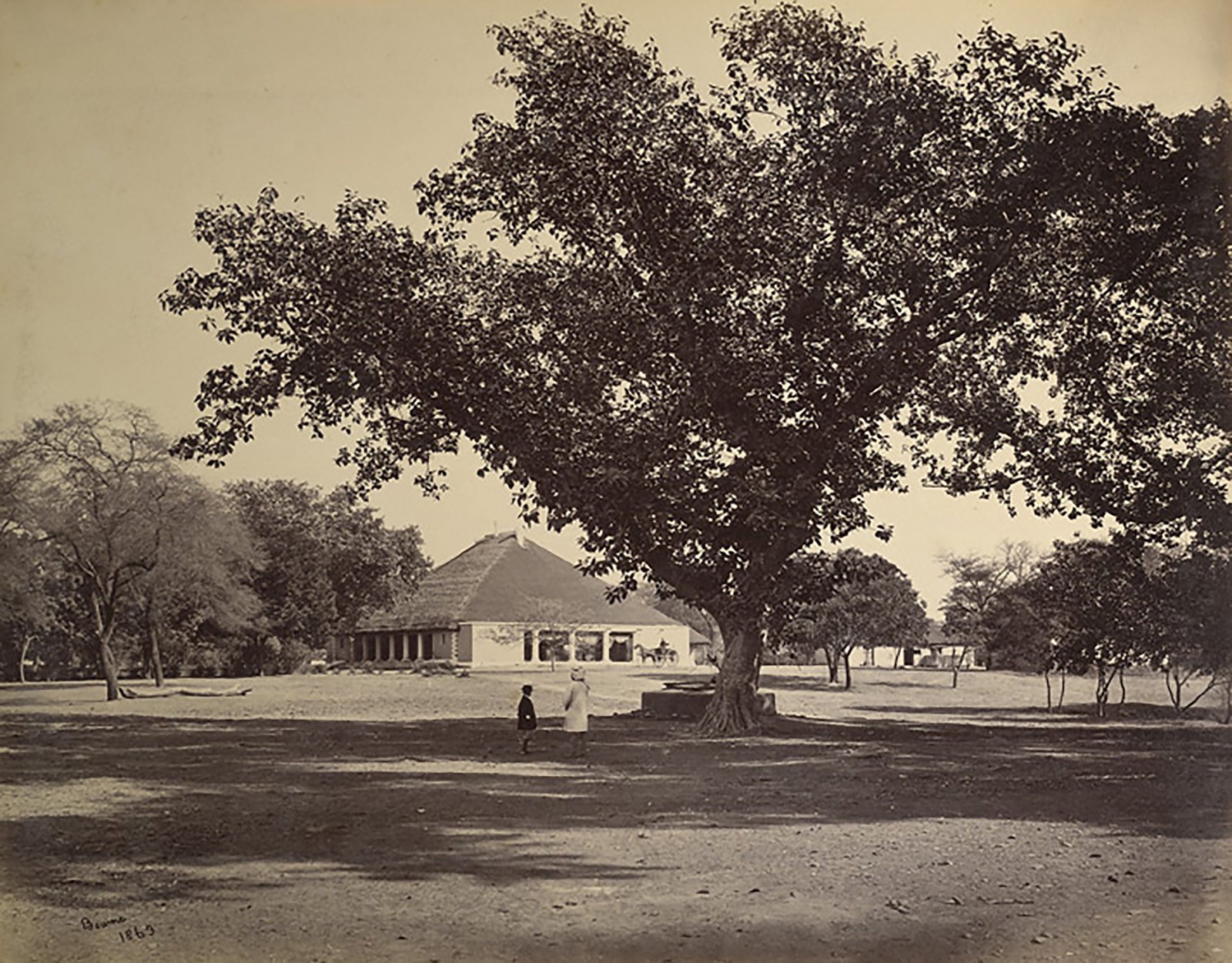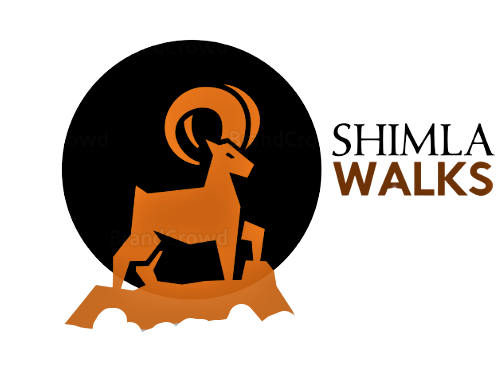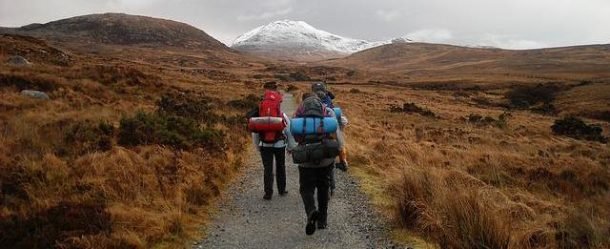The biggest challenge for the British gentry till 1903 was how to move up to the hills during summer. Shimla, the summer retreat had no connection with the world outside, and only a mountain trail connected it to the plains of North India. The locals hardly moved out of the hills and they hardly saw anyone coming up. The villages in the hills were connected through the mountain trails which were regularly used by the natives.
In 1856 Shimla was connected to the plains by road. But much before that a sketch of the railway had been drawn in 1947 by a journalist. After that several surveys took place before the construction of the railway track was finally initiated on 30th April 1898. In 1891 Kalka, in the foothills was connected by the railways. That brought some comfort to the travelers to the hills.
Delhi to Shimla
In the nineteenth century most travelers traveling from Delhi to Shimla traveled by ‘Dak Ghari’, – Mail Wagon. This wagon that was pulled by horses and carried post. After Ambala got connected by rail in 1876 the Dak Gari used to bring people from there to Shimla or Simla as it was known in those days. A long and tiring journey was covered sometimes in two to three days or sometimes it took over a week. The reasons were various. The road had, of course, no lights except the lamps which hung on some of the local wagons of the horse carriages but were not enough to light-up the path properly. The roads were not very well built and tarring was beyond the imagination, so it was full of pits and holes, at some places as deep as a foot. On either side of the road there used to be a trench. Driver and horse lying unconscious was a common sight for travelers and at many places the wagon could be seen completely broken and horse and wagon laying at right angles to each other.
From Calcutta to the Snowy Ranges
To quote from the book ‘From Calcutta to the Snowy Ranges by an Old Indian’ by Mr. J. F. Wyman in 1865
“The only approach to excitement on the route is in crossing the river channels on the route. Some of these are of great width, with their beds, for the most part, dry, but having probably, in the channel some three or four feet water. This necessitates all boxes of packages at the bottom of the gharry being lifted out. These rivers are at times flooded by sudden storms and by the melted snow from the Himalayas in the hot season, when communication is sometimes stopped for days; but, fortunately, they subside as rapidly as they rise. When approaching them, bullocks are harnessed to the gharry, and it requires some times two or three pairs to draw the vehicle through the fearfully uneven and soft yielding sand of the river’s bed. A’spill’, though not of very frequent occurrence, is sufficiently probable to induce a sharp precautionary look out being kept. Here again, the traveler will be applied to for bucksheesh by the gooruwallahs (bullock drivers) and coolies, which, if prudent, he will refuse. Why up to this day, bridges have not been constructed, I am at a loss to conceive, one is in course of building at the Marcanda river, but does not appear as it would be finished for several years to come.”
Ambala was midway for everyone, coming from both sides. Of those who returned from Shimla after summer, some had made Amballa their temporary home. They would rent a bungalow or a house for a few months, stay in that and also provide shelter at a patient rent to the travelers. When summer came, they returned to the hills. And those who traveled uphill could stop here for a night, relax and next morning take another ‘Dak Gari’ to set off to the hills.

Challenging Jourrney to the Hills
The Dak Gari
Sometimes, from there, there was change in ‘Dak Gari’. Here is a detailed description of it from ‘Calcutta to the Snowy Range, by an Old Indian’:
“Up to Umballa, only one horse is put to your dak gharry, but you are now permitted the luxury of a pair, owing to the steep and heavy nature of the road from hence to Kalka. The method of harnessing adopted is very original. In place of the usual splinter bar and pole, the shafts are allowed to remain in, one side of them being made to do duty of a pole. A bamboo is then lashed with rope to the shaft, projecting several feet necessarily on one side of the gharry and to this the second hose is attached. So that instead of the strength of the horses being directed to the center of the gharry, that of one is, as it were pulling away from it, more especially so when one or other of the poor quadrupeds takes it into its head to perform a pas seul. The springs of the dak gharries are on account of the roughness of the hill road, ’packed’ with bamboo, and well enwrapped in rope. From the actual necessity for this, as Kalka is approached of the jolting the unfortunate traveler is subjected to”.
Here are a few lines from Lady Lyton’s diary which will drop your jaws with surprise while you learn how the Viceroy traveled on the dusty road in those days.

An English House in Ambala
And Now
On Good Friday, 14th April, the diary runs:
“At 2 pm we left (Ambala) in 3 carriages and a char-a-blanc, the weather perfect, with a nice breeze and the horses galloping towards the hills was very pleasant. The hills did not look as high as I expected at this point but the jagged outline was fine, with palms and other trees in the foreground. Reached Kalka at 6, and had to wait again till the afternoon of the next day………….Dr. Barnett joined us here. Mrs. Burne and I went in tongas (covered carts with small ponies)… The Driver blows a picturesque horn as one winds round the hill road, and the thin ponies get on capitally. I enjoyed the scenery, which was beautiful, with different trees – some a tender green and some with large dark foliage like Spanish chestnuts. Capt. Jackson and Mr. Liddell rode ponies, and the families went in 6 dollies, which are like covered stretchers. You can sit up, but feel more comfortable lying down. We all felt better on reaching Dharampur, where the air was quite cold, and there were fir trees, and I heard a cuckoo, to my joy.
April 16th, Easter. Sunday. It does not seem like this great festival in the little white-washed bungalow, and the native people not keeping the day as far as Solan, a 2 hours’ drive in the afternoon, and I felt so vexed at getting on so slowly.
I implored to get on to Simla the next day, which we did with only a wait for luncheon. I saw the first red tree rhododendron, which is very striking, the flowers look like rosettes on quite high trees but they are not close together like our shrubs. We saw Simla for about an hour before we reached it. And it looks very ugly in the midst of pine trees though really chiefly deodars, like the Tyrol. From the cart road to Peterhof (the name of the Government House) we had to be carried in Jampans shaped like a boat with canvas stretched and a pole which men hold at each end.”
And now, every day hundreds of travelers rush up to the hills and down to the plains in their luxury cars, fitted with air-conditioning and music players.

Written by
Sumit Raj
Better known as Summit is the founder of Shimla Walks and a qualified tourism professional from Delhi University. Summit is a published author with six books to his credit, now. His seventh on titled as ‘Shimla Walks’ is on the way and to be released soon. Summit loves Himalaya and says that ‘Mountains travel in his veins with blood’.
One of his books that he wrote on Kalka Shimla Railway, named as A Journey to Shimla – by Toy Train can be read on Kindle.
Contact Him : +917018703170, +91 9459519620
WhatsApp : +91 7018703170


